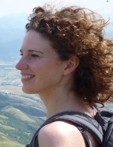Rural life in Protohistoric Italy: Relating sub-surface remains to archaeological survey data

Wieke de Neef
E-mail: W.de.Neef rug.nl
Promotor: Prof. P.A.J. Attema
Co-promotor: Dr P.M. van Leusen
Period of employment: 2010 - 2015
Financed by: NWO
The interpretation of rural protohistoric sites (i.e. the Bronze and early Iron Ages) discovered by field walking survey in the Mediterranean is often problematic because of the poorly datable and often poorly preserved remains that can be collected on the surface. In order to determine the size, function and period of use for each site, undisturbed sub-surface data are important. Unfortunately, there are very few protohistoric survey sites in the Mediterranean where sub-surface investigations have taken place and that have been published. The aim of my PhD project is to form a model for the interpretation of rural protohistoric survey sites in Italy. This model will be based on sub-surface data collected from a representative sample of rural protohistoric survey sites that have already been mapped during previous GIA survey projects in Calabria, Italy.
Although recorded archaeological sites number in the hundreds, similarities in the locational characteristics and in the recovered pottery assemblages suggest that they represent a limited number of different activities / functions. The first step of my PhD project will therefore be to develop a site typology and a sampling strategy to investigate representative examples of each type. At the same time I will conduct a review of ethnographic and historical literature to develop a better understanding of both the pre-modern rural activities that might have generated each of these site types, and the modern (post-war) history of tillage, terracing and other alterations that so clearly affects the preservation and detection of archaeological remains in the Mediterranean.
The next step will be to investigate the sample with a series of increasingly intensive and invasive methods, starting with a complete surface resurvey within a measured grid, manual cores to establish the broad archaeological and geological stratigraphy and state of preservation, and geophysical survey. For this last part I will closely collaborate with a post-doctoral researcher in archaeological geophysics, appointed within our NWO-funded research project Rural Life in Protohistoric Italy. On the basis of the data thus collected, a decision will be made which sites should be excavated, and how. The excavation will pay particular attention to the recovery of ecological, micromorphological, and dating information.
In the last, analytical stage of the research, the main topic of study will be the correlations between the different surface and subsurface data sets, because this will allow a progressive refining of the field methodology.
The goal of the program is to understand how sites of each type end up being represented by surface artefact scatters, so that other archaeologists can use this knowledge to attach interpretations to their own (known and future) surface sites, and heritage managers can make more effective decisions about the allocation of public funds for the preservation of the rural archaeological heritage.
| Last modified: | 23 July 2018 1.29 p.m. |
